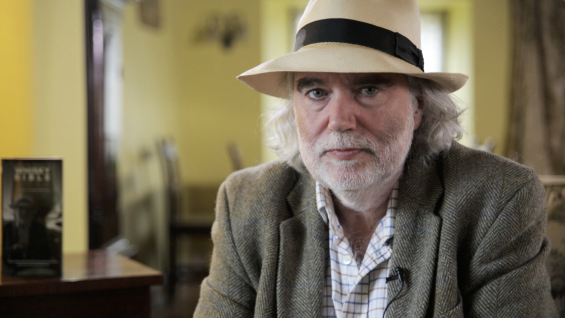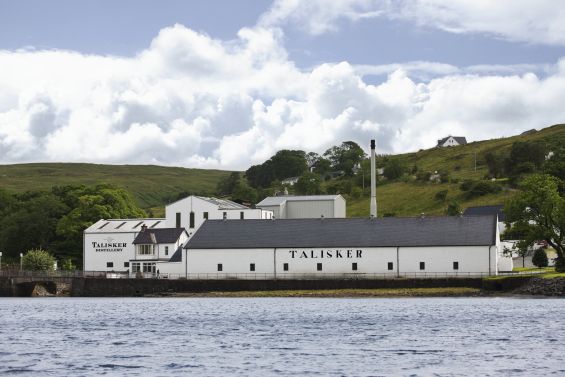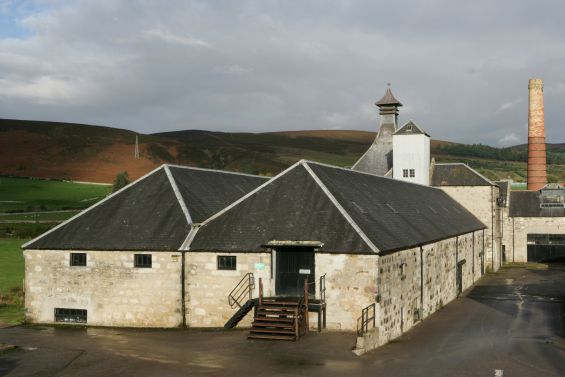Reknown whisky author Jim Murray (he organises the World Whisky Awards) tells how Lord Lucan helped him get into whisky, how he helped create the rye boom, and why sulphur is the enemy of a great dram…
Before you wrote about whisky, you were a Fleet Street reporter. How did you get involved in journalism?
I was still at school. I covered league cricket at the age of 14, so earned my first pennies at that tender age. After school, I wouldn’t go home, I would go to the paper and during my holidays I’d work for them, too. I set up my own press agency when I was 20, covering the Midlands. I was getting stories on the front pages of national newspapers, so I was known around Fleet Street. I did hard investigations – I specialised in murders, turned over crooks, paedophiles, you name it. It was a long, hard, enjoyable and diverse career.
Why the move into whisky?
Jim Milne of J&B was holding a seminar where he had these whiskies marked X, Y and Z, but they didn’t say the name of the distillery. I nosed one and said ‘This doesn’t go in your blend; it’s Fettercairn.’ He looked at me and said ‘Yes, that is Fettercairn, and the only reason it’s here is because it’s a mistake.’ We talked and we became mates because there was great respect between us. It was Jim who told me that I should write my views on whisky, because until then all I’d done was generic pieces on history and distilleries. I remember turning to my [now] ex-wife and said I was going to give up Fleet Street and do this full time, which horrified her. I was on a well-paid job and there was no guarantee of earning anything whatsoever.
Where does your love of whisky come from?
I was working on the Lord Lucan story at the age of 16, which was fun. I finally got a holiday and I was determined to get to a distillery, and determined to get to an island. I went on the boat to Skye, got to Talisker distillery and it literally changed my life. I remember the aromas, the sounds, I remember going into the warehouse. It’s as if it happened yesterday, it’s so vivid.
You’re a huge bourbon fan, too…
I got my taste for bourbon before I went to Talisker. When I left school at 16, I spent a month in America with relatives before joining the press agency. I tasted about 40 whiskeys – I looked a lot older than 16! [Later] I went to live in Kentucky for about four months and kept going back. I learned and learned. The one thing I said to them was they have to start producing more rye, but they said rye is dead. I said no chance, because people can’t get enough Islay whisky, and rye is their Islay – it’s the big, ballsy one that makes a statement. And rye has now gone through the roof.
I’m proud of the fact I got the American industry to re-examine rye. And I got the Irish whiskey industry to get pot still going, because that was dead. It’s the old campaigning journalist in me – if you believe in something, you go out and fight your campaign. And people are drinking Japanese now. I was on a flight and the guy next to me said ‘Are you Jim Murray? My God, you’ve cost me some money. The Yamazaki [Sherry Cask 2013, which won Jim’s 2015 World Whisky of the Year] – I managed to get three bottles and each one cost me £2,000 each, but it really was the best whisky I’d ever tasted in my life.’ It’s lovely when you hear things like that, because you feel vindicated.
Talking of sherry-cask whisky, you’re notoriously outspoken about sulphur…
Everyone should have an issue with sulphur! You get ridiculous PR people who are paid to do what they’re told coming out with ridiculous statements saying that this [sulphur] just adds to the flavour of whisky. It doesn’t add; it detracts, it ruins whisky. That is why you’ve got copper pot stills, to make it nice and clean, beautiful and bright, and honeyed and sweet, and then you put it into sulphur and you f*** it up! Sorry, but there are so many thick people in the industry, it’s terrifying, and they’re all covering their tracks.
I remember there was a guy in America who had his own column about whisky, and I mentioned the sulphur thing, and he goes ‘What problem?’ I said ‘Are you serious? You’re a whisky writer. That’s like being a football correspondent and not knowing what offside is.’
What’s the most underrated distillery?
God, there are so many. From Scotland, I would say two: Clynelish should be brought out as a really special whisky. It [Diageo] doesn’t do with it what they could do with it. But I understand why, because Clynelish is such an important blending whisky because it’s got so much character. The other one would be Glentauchers, which I discovered back in the early 1980s.
And the most overrated?
Fettercairn.
What’s the next big country for whisky?
The two countries that could do really well are Australia and India. Australia is fantastic – what they’re bringing out, there may not be much of it but my God, I do look forward to doing the Australian section [of Jim’s Whisky Bible]. I think Australia has so much potential. And Taiwan is making some brilliant whisky.
What do you drink when you’re not drinking whisky?
Real ale – I love it. And I’m pretty useful on rum, but I don’t think it’s understood at all. Rum is the only spirit you should put caramel in, for instance. I don’t think you should put caramel in whisky. The industry says caramel does not affect the flavour; yes, it does, massively. I’m pretty good on gin, but I don’t have time – writing the Bible alone takes four to five months a year, and the rest of the time I’m going round the world doing TV and shows.
Would you recommend people buying certain whiskies to invest?
The whole point of the Bible is to actually enjoy the whisky. For me, it’s about tasting it, not stashing it away and making loads of money. I would never say to people to go and buy a whisky for investment. I went to Clynelish [a number of years ago], and the manager took me to the original distillery, renamed Brora. He showed me a warehouse and said to me: ‘This is our Brora. I’ve got two warehouses of this. The blenders don’t want to use it because there’s only x amount of it, and once it’s run out, it’s run out. They want to use whiskies that they can continue using; we don’t know what to do with it.’ And he added ‘If you know anyone who wants to buy all this stock…’ I swear, two warehouses of Brora!
What about NAS whiskies?
I can understand why it’s happening. I don’t have a problem with NAS personally – the original Glenfiddich had no age statement, for example. It was like eating a slightly underripe gooseberry – it had this tartness to it, but also this really gorgeous natural feel, and it was refreshing. But when they brought it up to 12 [years old], you could feel that maybe they’d upped the caramel a bit, and that tartness and the liveliness vanished and down it went. I think age can be a red herring.



